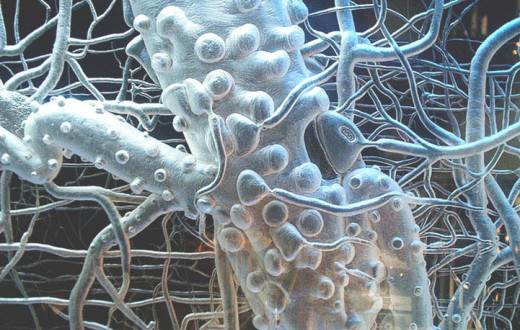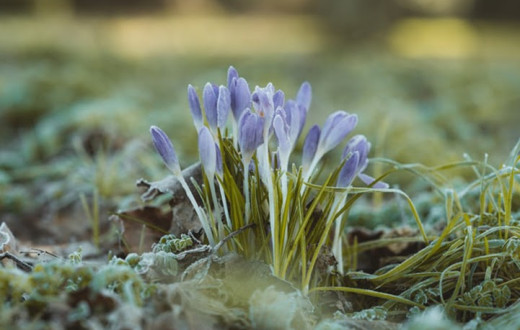“We need to protect the Earth. The ancient people all over the world used to honor the Earth, the rivers, the mountains, and the air. We need to retain these ancient values and have the modern vision for development and prosperity for everybody.”
- Gurudev Sri Sri Ravi Shankar
Volunteers from around the world have initiated several environmental projects – large-scale tree plantations through Mission Green Earth, water management and protection (including cleaning polluted rivers and rejuvenating dried rivers), and zero-budget natural farming techniques that are both economically and organically sound.
Highlights:
Under the Mission Green Earth initiative (in collaboration with the United Nations), The Art of Living planted 55 million trees in 36 countries and 26 states of India
40,310 cleanliness drives conducted by volunteers
512 tons of disposed clothes, plastic, and garbage was removed during the “Clean Yamuna Campaign” in Northern India
Trained 20 lakh farmers in natural farming methods
Created over 62 clean energy women entrepreneurs who have installed more than 7,000 smokeless chulhas to address indoor air pollution
107 villages in Maharashtra sensitized on indoor air pollution and the importance of smokeless cooking stoves
Awareness camps held on WASH (water, sanitation, and hygiene) in economically backward villages, leading to the building of over 15,000 toilets
Home herbal gardens created in 18 remote villages in Maharashtra
Tree Plantation
The Art of Living is focused on reviving a green earth and our volunteers around the world strive to make this positive difference by planting and protecting indigenous trees.
The Art of Living has enabled the plantation of 55 million trees across 36 countries and 26 states of India.
Mission Green Earth
The Art of Living launched a massive initiative christened ‘Mission Green Earth’ to encourage people to plant trees. The initiative, taken up in association with the United Nations Millennium Campaign (UNMC) and United Nations Environment Program (UNEP), enabled the plantation of 10.6 million trees across 36 countries and 26 states of India. More than the number of trees, it is the number of people who have been encouraged to take action towards environmental sustainability that makes this project one of the biggest exercises against global warming.
Water Conservation and River Rejuvenation
The main causes for the drying up of rivers are urban encroachment and deforestation combined with unsustainable extraction of ground water and loss of traditional knowledge.
The Art of Living has begun conservation and rejuvenation of water resources and is currently working on 16 such projects, with a focus on Indian rivers. The Art of Living has been inducted as the nodal agency by the government of Karnataka to oversee the implementation of three rivers: Vedavati, Kumudavati, and Palar.
The project involves four primary steps:
Soil erosion control and checking the speed of rainwater flow on stream paths with boulder checks
Making ground water recharge wells and injection wells at scientifically identified locations
Rejuvenating local water bodies such as wells and tanks
Planting trees to increase vegetation cover
The Conservation and Rejuvenation of the Kumudavati River
Bengaluru, the capital of Karnataka, India, is the IT hub of India. Its drinking water needs are set to reach far higher than the current supply from the river Cauvery, which is its primary source of water. Developmental agencies agree that a sustainable option would be to conserve existing water resources and revive the same. One such river is the Kumudavati river, which flows across 278 villages in Karnataka.
The Art of Living started the conservation and rejuvenation of the Kumudavati river in 2013 and focused on three cornerstones:
Awareness: Reaching out to different sections of society through walkathons, street plays, rallies, and interactive sessions with villagers.
Basin Conservation: This is a project spanning 4 – 5 years with encouraging interim results in eight villages.
Community Inclusion: Over 100 volunteers have been making weekly visits to identified site areas and developing basins. The Art of Living team has also been conducting empowering breath-based programs for the upliftment of the villagers, while Youth Leadership Training Programs are also being initiated to create local leaders. The project has inspired the support of corporates, including Hindustan Aeronautics Limited and Bosch.
WORK SO FAR
- 129 boulder checks
- 101 recharge wells
- 7 injection wells
- 10 water pools
- More than 16,500 saplings planted and maintained
Under construction across 100+ villages, benefiting 35,000 people:
- 418 boulder checks
- 268 recharge wells
- 20 injection wells
- 25 water pools
- 10,000+ saplings being planted, spanning 100+sqkms
Under the Vedavati Water Conservation and River Rejuvenation Project, work is ongoing in 3 districts:
- Chikmagulur
- Chitradurga
- Hasan
Tamil Nadu
Naganadhi river – 15 years ago, Thiruvannamalai in Tamil Nadu was a familiar terrain of lush greenery.
Today, there are pockets of barren land. Since September 2014, volunteers have worked on the project in Thiruvannamalai and Vellore. The construction of fifteen recharge wells and three boulder checks has allowed greater percolation of water. Seven open wells, which were dry for years, are now holding water.
Maharashtra
Tawarja and Gharni rivers: As part of its Jal Jagruti Abhiyan (a campaign aimed at finding ways to overcome the severe drought situation in Maharashtra), The Art of Living has helped to conserve two more rivers in Latur – the Tawarja river in Ausa taluka and the Gharni river in Shirur Anantapal. Currently, 12 water conservation and river rejuvenation projects are in progress in the Indian state of Maharashtra, with a promise to contribute to water conservation efforts.
In the bleak backdrop of frequent droughts, crop failure, and farmer suicide, an oasis of hope emerges with the water conservation and river rejuvenation projects.
With more water available, farmers are able to sustain farming, buy equipment, purchase more seeds, and grow water-intensive crops. Thanks to these efforts, men are now able to find brides.
“The regions of Maharashtra, where water conversation and river rejuvenation work has been initiated, are now self-sufficient in water.”
- Dr. Arvind Lokhande,
Sub-Divisional Officer of Partur
Temple flower waste management project
This project was started by the Sri Sri Rural Development Program Trust in partnership with the major temples of India. A case study of this project is the solid waste management unit being run at the Dakshineshwar temple in Kolkata. Supported by Eastern Coalfield, Ltd. and Debottar Estate, the project is recycling the flowers offered to the Goddess Kali by pilgrims using a solid waste management (SWM) plant. It is estimated that around 200 kilograms of such waste is generated every day in the temple. The SWM plant processes the waste into organic compost, which is in turn made available to farmers. By 2017, The Art of Living plans to set up 40 such SWM plants in temples across India.
- Dec 2015: 1,241 kg of waste was converted into 414 kg of compost
- Jan 2016: 3,000 kg of waste was turned into 1114 kg of compost
Cleaning Our Water Sources
"We have always used the water from the holy rivers like Ganga and Yamuna to purify ourselves, but today we have reached a point where we have to purify this water. So, we are waging a war against pollution in our rivers. The government alone cannot do it. We will have to come together."
- Gurudev Sri Sri Ravi Shankar
The Art of Living mobilized thousands of citizens for the Clean Yamuna drive (also known as Meri Dilli, Meri Yamuna) in 2010 and the Mazi Godhi, Mazi Aai Godavri river clean-up in 2015. Driven by The Art of Living volunteers, both the water source cleaning initiatives saw people from all strata of society participating for the cause.
The Meri Dilli, Meri Yamuna project contributed significantly to the city’s readiness for the Commonwealth Games in October 2010. The Godavari river clean-up aided the pilgrims visiting the Kumbh Mela in Nashik to have a safer dip into the sacred river.
Another river cleaning project is the one running at Pampa, which is the third longest river in Kerala, India. The river is also revered as the Dakshina Ganga and flows along the banks of the sacred Sabrimala temple. In April 2014, The Art of Living launched the Holy Pampa Cleaning Project, which involved the removal of 600 tons of waste from the river as well as awareness drives to sensitize 3 million people on river conservation. Around 8,000 volunteers from 14 districts were involved in this initiative. By the end, the volunteer hours spent on this project amounted 68,800.
Sri Sri Natural Farming
The Art of Living has launched awareness programs to encourage people to return to traditional methods of natural farming and eliminate the use of harmful chemical fertilizers and pesticides. Excessive use of chemical fertilizers has poisoned the soil, not only reducing the yield but also making produce grown on them dangerous for human consumption.
More than 2,000,000 farmers across India, including those in Maharashtra, Madhya Pradesh, and Rajasthan have been trained in natural farming workshops and have learned how to regain the lost health of the soil and the bounty of their crops.
Training in natural farming techniques is an essential aspect of The Art of Living rural development program, the 5H initiative.
Protecting the Cow Species
The foundation of natural farming techniques is the cow. Cow dung and urine are critical to making the natural pesticides that give good yield and protect the soil.
To complement natural farming techniques and to halt the dwindling number of indigenous cows, The Art of Living has taken steps to protect and rear these breeds. For example, the Ongol from Andhra Pradesh, Kangayan from Tamil Nadu, the Gir from Gujarat, and the Sahiwal from Punjab.





























